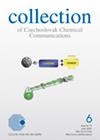Assessment on the effects of the operational conditions on the manufacture of PLA-based composites using an integrated compounding–injection moulding machine
引用次数: 0
Abstract
Cellulose fibres were employed as reinforcement agent for biodegradable composites using polylactic acid (PLA) as a polymer matrix. PLA can be obtained from renewable resources, and it is attracting much interest owing to its favourable physico-mechanical properties and biodegradability. Prior to composite compounding, two commercial PLA from different suppliers were characterized for apparent density, flow index, crystallinity, thermal properties, melt flow rheology and intrinsic viscosity for comparison. In experiments performed with an integrated compounding–injection moulding machine (ICIM), the effects of the processing conditions on the mechanical properties of composites (tensile strength, stiffness and strain at break) were analyzed using a Taguchi experimental design. Other properties of the composites, such as surface morphology and fibre length distribution, were also considered. ICIM technology provided composites with better mechanical properties and lower fibre degradation than the conventional sequential extrusion and injection moulding (SEIM) technology.使用集成复合-注射成型机评估操作条件对制造pla基复合材料的影响
以纤维素纤维为增强剂,制备了以聚乳酸(PLA)为聚合物基体的可生物降解复合材料。聚乳酸可以从可再生资源中获得,由于其良好的物理力学性能和生物降解性而引起了人们的广泛关注。在复合制备之前,对来自不同供应商的两种商用PLA进行了表观密度、流动指数、结晶度、热性能、熔体流动流变学和特性粘度的表征,以进行比较。在综合复合注塑机(ICIM)上进行了试验,采用田口试验设计分析了加工条件对复合材料力学性能(抗拉强度、刚度和断裂应变)的影响。复合材料的其他性能,如表面形貌和纤维长度分布,也被考虑。与传统的连续挤压和注射成型(SEIM)技术相比,ICIM技术为复合材料提供了更好的机械性能和更低的纤维降解。
本文章由计算机程序翻译,如有差异,请以英文原文为准。
求助全文
约1分钟内获得全文
求助全文

 求助内容:
求助内容: 应助结果提醒方式:
应助结果提醒方式:


